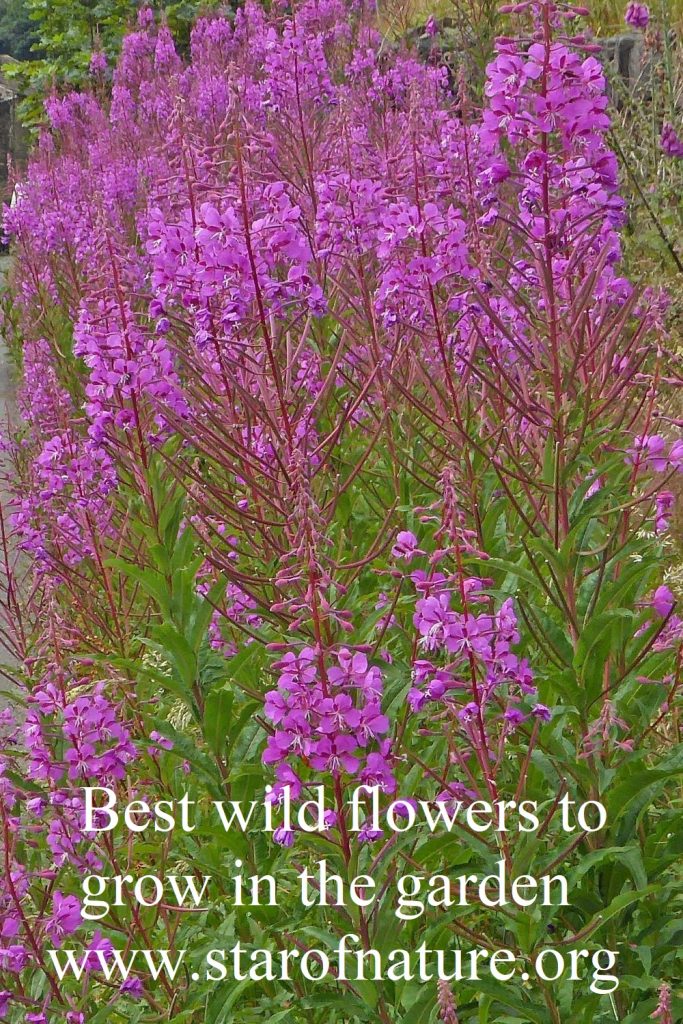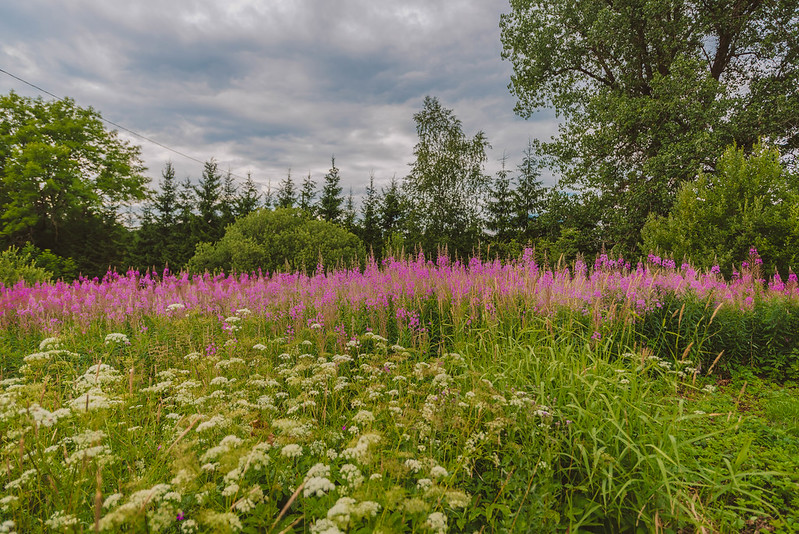Best Wild Flowers to Grow in the Garden
If you would like to rewild your garden or simply make it more nature friendly, you may decide to grow some wild flowers. But which should they be, when there is so much choice?
Wild flowers are beneficial for the environment, as well as for the gardener. They provide food for a wide range of creatures, including bees that feed on their nectar and pollen, and birds that eat their seeds. Growing them is also one of the most esthetically pleasing ways to care for wild life. And this is important, because gardeners should be able to enjoy the results of their work – the aim is a mutually beneficial co-existence of all living beings.
I chose the flowers in the list below using several criteria, including the ease of growing, beauty, benefits to insects, value as food and medicine, and a long period of flowering. All the plants I included excel in several of these ways.
The flowers have their individual requirements, such as a sunny position or most soil, but most are adaptable and will do well in a range of conditions in the garden. They are all undemanding and fully hardy. All are resistant to pests and diseases and are therefore easy to grow organically.
The flowers can be bought from wild flower nurseries or grown from seed, and some may be already present in your garden. Most wild flowers are very easy to propagate – they evolved to be competitive, since they would not have survived otherwise.
1. Rosebay willowherb – a superb source of nectar for bees
Rosebay willowherb (Chamaenerion angustifolium) is a beautiful perennial ‘statement’ plant. It is over a metre tall and spreads quickly, forming large colonies. It does need an open sunny position to do well – the flowers will be paler and smaller in shade. It can be often seen growing on the sides of roads and railway lines where it excels in full sun, looks like a cloud of dark pink and is impossible not to notice.
Rosebay willowherb flowers for a long time from early July and until early September. These are the months when the weather is warm and we tend to spend more time in the garden, and therefore can enjoy its beauty. It is also the time when bees are most active and need to collect as much nectar as possible for their winter stores. And rosebay willowherb is one of the most prolific nectar producing wild flowers – it is difficult to find its rival. Bees also collect its pale green pollen.
Rosebay willowherb is very resilient and spreads easily, too easily perhaps. If conditions are right, it can become invasive, and so it is best given a place in the garden where it will not outcompete less vigorous plants. As long it is in the sun, and is allowed to form a colony, it will look strikingly beautiful for a long time.
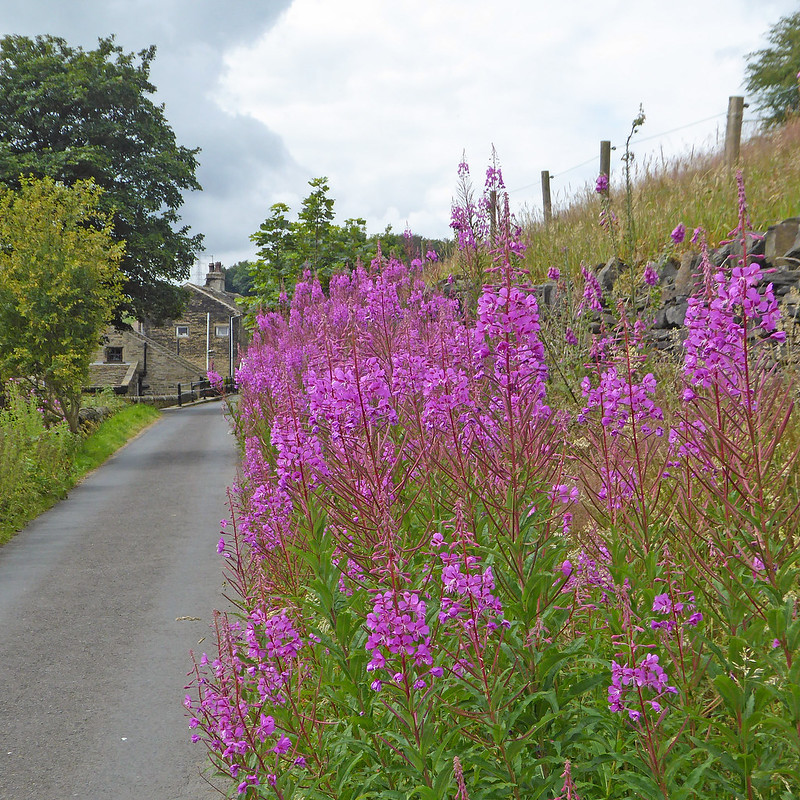
2. Salad burnet – one of the best wild greens
Salad burnet (Sanguisorba minor) is a relatively small perennial with a low dense clump of foliage and flower stalks growing 30-40cm tall. Its fresh leaves have a pleasant taste resembling that of nuts and cucumber. It starts growing very early in spring and continues until late autumn, providing a nearly constant supply of leaves.
True to its name it is a great salad vegetable. Its young leaves are very tender and have a beautiful lacy appearance. It is a very well-behaved plant, beautiful and non-invasive, and therefore an entirely appropriate addition to a vegetable garden.
It will do well in sun or half-shade and prefers light alkaline soil.
See my post ‘Salad Burnet: Recipes and Growing Advice‘ on how to grow salad burnet and use it as a vegetable.
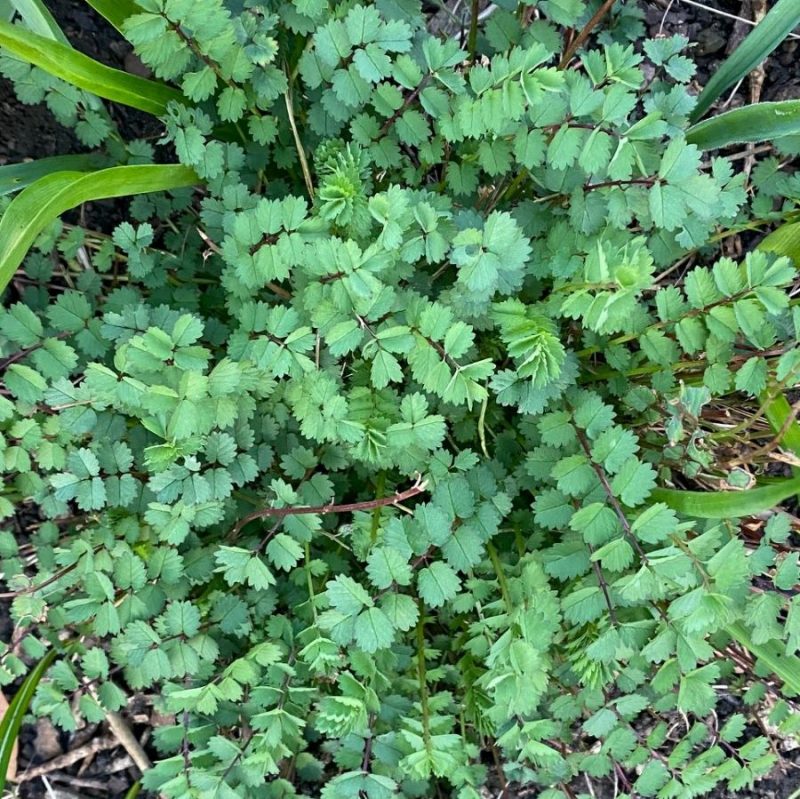
3. Purple loosestrife – a perfect flower for wet soil
Purple loosestrife (Lythrum salicaria) is an exceptionally beautiful and showy plant that is also an excellent source of nectar for insects. It flowers for a long time from July to September. It requires full sun and wet soil, and so does well planted at the edges of ponds.

4. Dandelion – a vegetable and a source of pollen for bees
For some dandelion (Taraxacum officinale) is a malicious weed, whereas for others it is a delicious vegetable. It does self-seed very efficiently, and may therefore occasionally sprout in your vegetable beds. But let it nevertheless grow in your lawn – its advantages by far outweigh its problems.
Dandelion does not require any care or propagation, of course – all it needs is to be allowed to exist. It is a beautiful flower, that brightens lawns and meadows in spring. Mass flowering of dandelion is one of the beautiful miracles of nature.
All parts of dandelion are edible and medicinal. Its leaves are excellent in salads for much of the year – they start growing early in spring and continue until late autumn or early winter. Dandelion flowers have many fun culinary uses, and there are recipes for dandelion jam, gelée and wine. Dandelion provides many health benefits – its supplements are prescribed for digestive disorders, liver problems, excessive weight and other health conditions. Its extensive medical use in the past is evident in its Latin name – officinale (‘medicinal’, ‘from a pharmacy’).
Dandelions are also excellent for bees. They produce nectar, but it is not their main interest for bees that in spring prefer other nectar-producing plants that flower at the same time, such as apples and cherries. Dandelion’s primary value for bees is its pollen. Bees collect huge amounts of it when they desperately need it in spring to feed their young.
Dandelion has yet another benefit in that it flowers a second time in early autumn. This second flowering is much less prolific than the first, but it happens at a time when there are few pollen- and nectar-producing flowers around, and so it becomes an important resource for insects.
See my post on dandelion for more information on using it as a vegetable.
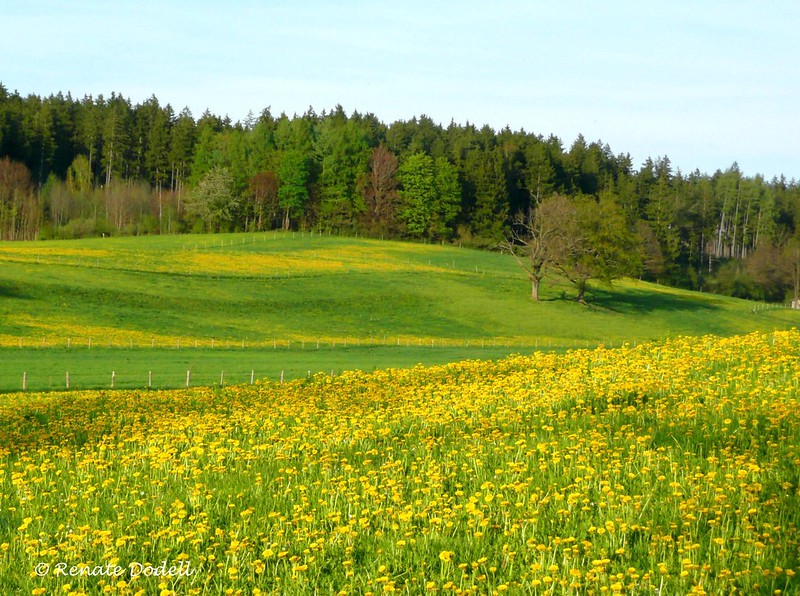
5. Common knapweed – a late summer beauty for the garden
Common knapweed (Centauria nigra) is a striking-looking perennial, 30-50cm tall, with large purple flowers. It is very attractive to bees and butterflies, that collect its nectar and pollen. It flowers in late July and August and needs an open sunny position.

6. Elecampane – a ‘magical’ statement flower
Elecampane (Inula helenium) is another ‘statement’ plant for the garden. It looks majestic with its large leaves, strong stems and wild-looking, sunflower-like flowers. It grows 100-150cm tall and blooms for weeks in July and August. Elecampane is very attractive to bees, and, like sunflower, provides them with nectar and pollen.
In spite of its exotic appearance it is very undemanding, and though it prefers moist soil, it can cope with prolonged dryness. It does best in a sunny position.
Elecampane was a very important medicinal plant in the past, and was probably sacred to many peoples, as evident in its names, such as ‘elfdock’, that evoke mythology. In ancient herbals it is ascribed magical properties.
Its root, when dried and finely ground, is a lovely spice for fruit and vegetable dishes.
See my post ‘Elecampane (Inula helenium): Ancient ‘Sunflower’ of Europe‘ to learn more about its cultivation and uses.
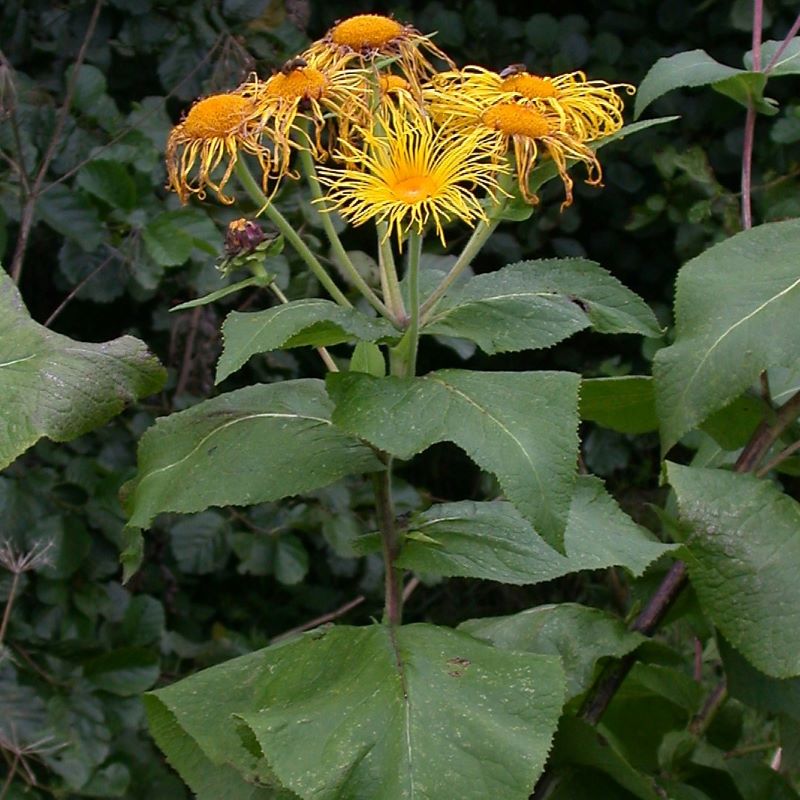
7. Lily-of-the-valley – a late spring Victorian favourite
Lily-of-the-valley (Convallaria majalis) is an exquisitely beautiful flower with a rich history and symbolism. It blooms in May, and though this lovely event is very short-lived, it deserves a place in the garden due to its elegance and unrivaled smell.
Lily-of-the-valley looks wonderful in vases where it should not be combined with other plants – similarly to daffodils and some other plants, it produces substances (‘antibiotics’) that suppress the growth of its neighbours. It will therefore shorten the life of other flowers in an arrangement.
As a woodland plant, lily-of-the-valley is tolerant of some shade. It can grow under trees as long as the soil is not too dry, and resembles the moist, crumbly, fertile woodland soil – a result of many years of accumulated leaf mould. If conditions are right, lily-of-the-valley spreads easily and forms dense colonies – it is never on its own. As a result, it provides an attractive and easy-to-look-after ground cover for much of the year.
To learn more about a Victorian art of forcing lily-of-the-valley in winter read my post ‘Growing Lily-of-the-valley in Winter‘.
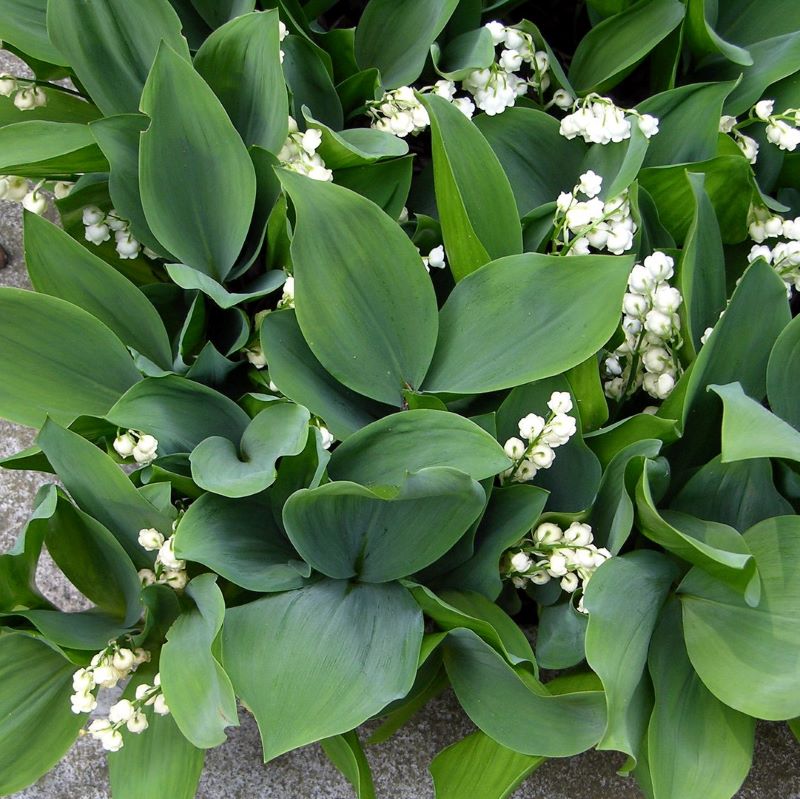
8. Lady’s bedstraw – an essence of summer
Lady’s bedstraw (Gallium verum) is a very attractive medium-size perennial plant (usually 30-50cm). Its yellow flowers form dense clusters resembling foam. Its profusion, warm colour and a strong smell similar to that of honey, make it a perfect symbol of the summer’s opulence.
Lady’s bedstraw needs a sunny position, but is otherwise very undemanding. It flowers from July till September and can be often seen in meadows and road verges where it forms large colonies. If the road verges are mowed in early August, in manages to grow back and flower again in September. In the past it was used in bread and beer making as an alternative to yeast, and had many medicinal uses.
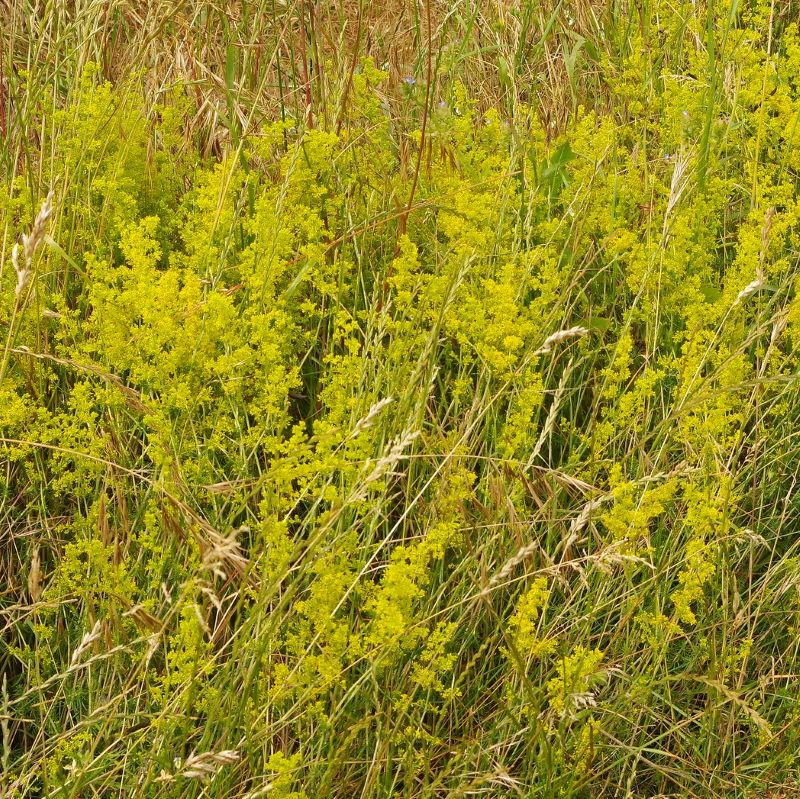
9. Tansy – a wild chrysanthemum
Tansy (Tanacetum vulgare) is a very showy plant that flowers from July to September. It is 100cm tall and has attractive finely divided leaves and clusters of unusual, bright yellow, button-like flowers. It prefers a sunny position, but is otherwise very adaptable. Its leaves have a strong smell that resembles chrysanthemum.
Tansy has powerful antibacterial properties and was used as a preservative in the past. It can be also used to make an organic insect repellent for the garden and home – its dried flowers effectively deter moth.
Tansy looks wonderful in late summer flower arrangements. Though technically not a chrysanthemum, it is an excellent wild alternative to chrysanthemums in the garden. And unlike chrysanthemums, it does not requires any care.
Similarly to rosebay willowherb, it spreads easily and can become invasive. It forms colonies and is best given a position where it can expand without overwhelming other plants.
Read my post about tansy to learn more about its cultivation and uses.
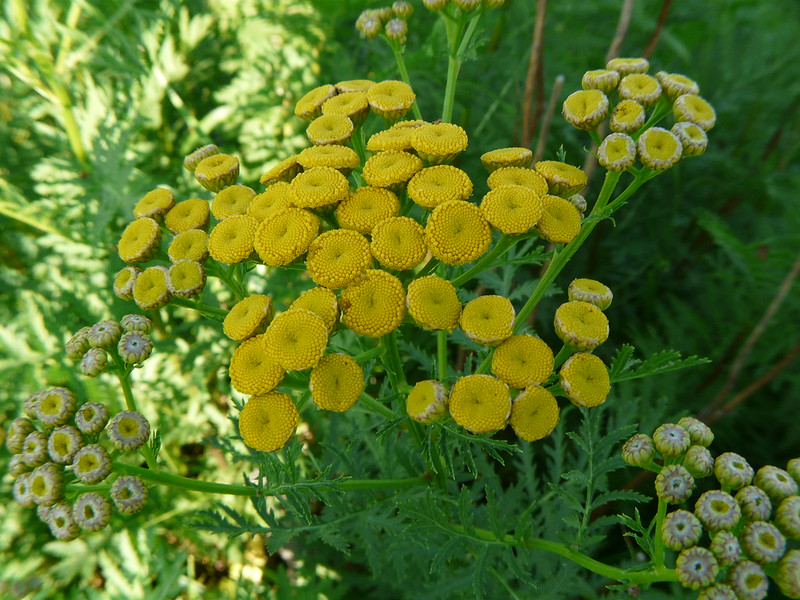
10. Primula – an early spring beauty and decoration for cakes
Primula is a small perennial that forms clumps and flowers prolifically for a long time in spring. It is one of the first flowers to bloom. It is beautiful and extremely undemanding. Its leaves are good in salads. Its flowers are also edible and can be used to decorate salads and desserts, either fresh or crystalized.
To learn more about culinary uses of wild flowers read my post ‘45 Edible Flowers for Baking, Cakes, Cocktails, Salads and More‘.
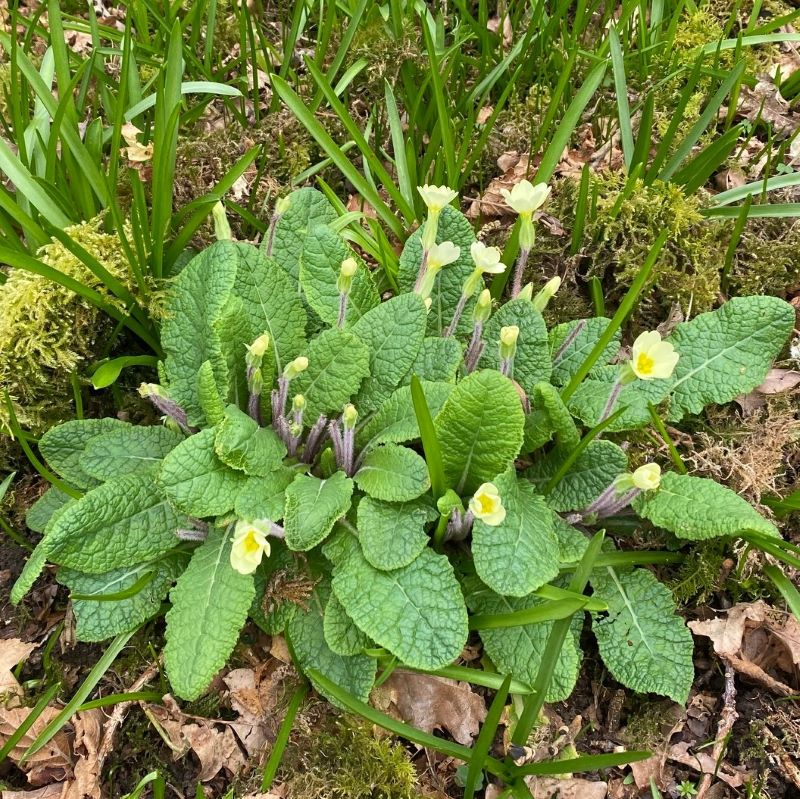
11. Yarrow – an ultimate healing plant
Yarrow (Achillea millefolium) needs full sun, but is otherwise very adaptable and will grow on dry poor soil. It flowers for a long time in June and July. Wild varieties have white or pale pink flowers, but now garden centers also sell cultivars with flowers in deep shades of pink, red and orange.
Yarrow was one of the most important medicinal plants in the past, known particularly for its ability to stop bleeding and for its antiseptic properties, and research suggests that it is just as effective as modern medicines. It was used to treat wounds and is still an important ingredient in cosmetics.
Yarrow flowers are a very attractive for bees and butterflies.
See my post ‘Nettle and Yarrow in Cosmetic Recipes‘.
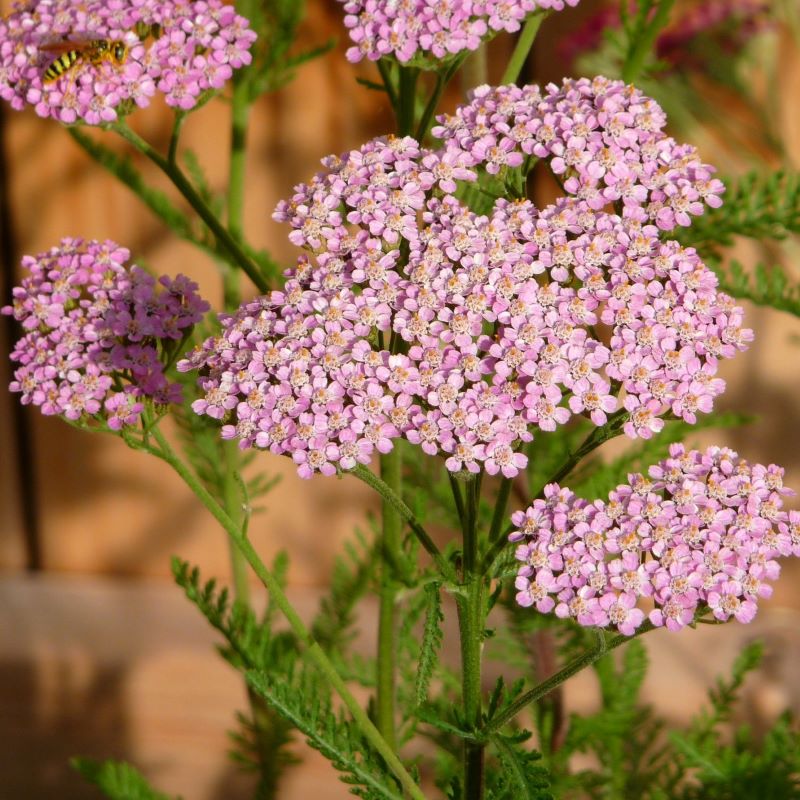
12. Bluebell – a wild hyacinth
A wild flower gardnen has to have bulbs – it would be a wasted opportunity not to include them. They grow and flower in early spring and disappear in the summer, and so do not compete with other plants.
Bluebells, wild hyacinths, are probably the most impactful and easiest to grow. They are woodland plants and therefore can be planted under deciduous trees, as long as the soil resembles the moist and fertile woodland soil. In such conditions they would have sun in spring and shade later in the summer. Bluebells look amazing planted an masse. They are an excellent source of nectar and pollen for bees, bumblebees and other insets in early spring.
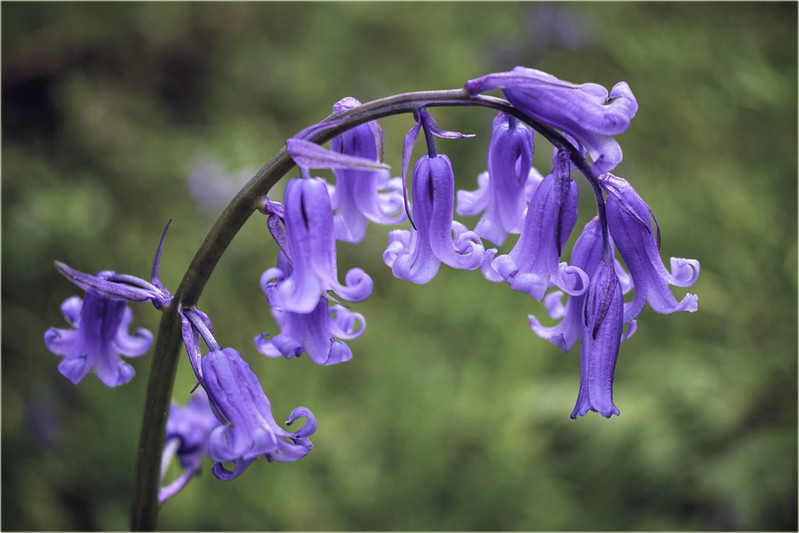
Image credits: rosebay willowherb by Tim Green, purple loosestrife by gailhampshire, dandelion flowering in Längenlaich by Renate Dodell, common knapweed by Jim Easton, elecampane by Len Worthington, lily-of-the-valley by Alex O’Neal, tansy by photogramma1, yarrow by B.D.’s world.
Posts related to ‘Best wild flowers to grow in the garden’
How to Grow Wild Flowers in the Garden
Best Wild Flowers for Bees and Butterflies
Medicinal Wild Flowers for your Garden
Small Scale Rewilding: How to Rewild your Garden
What is Nectar: Basics for a Bee-Lover
What is Pollen: Basics for a Bee-Lover
How to Attract Sparrows to your Garden
Organic Pest Control: Sanctuaries for Beneficial Insects
Pin ‘Best wild flowers to grow in the garden’ for later
